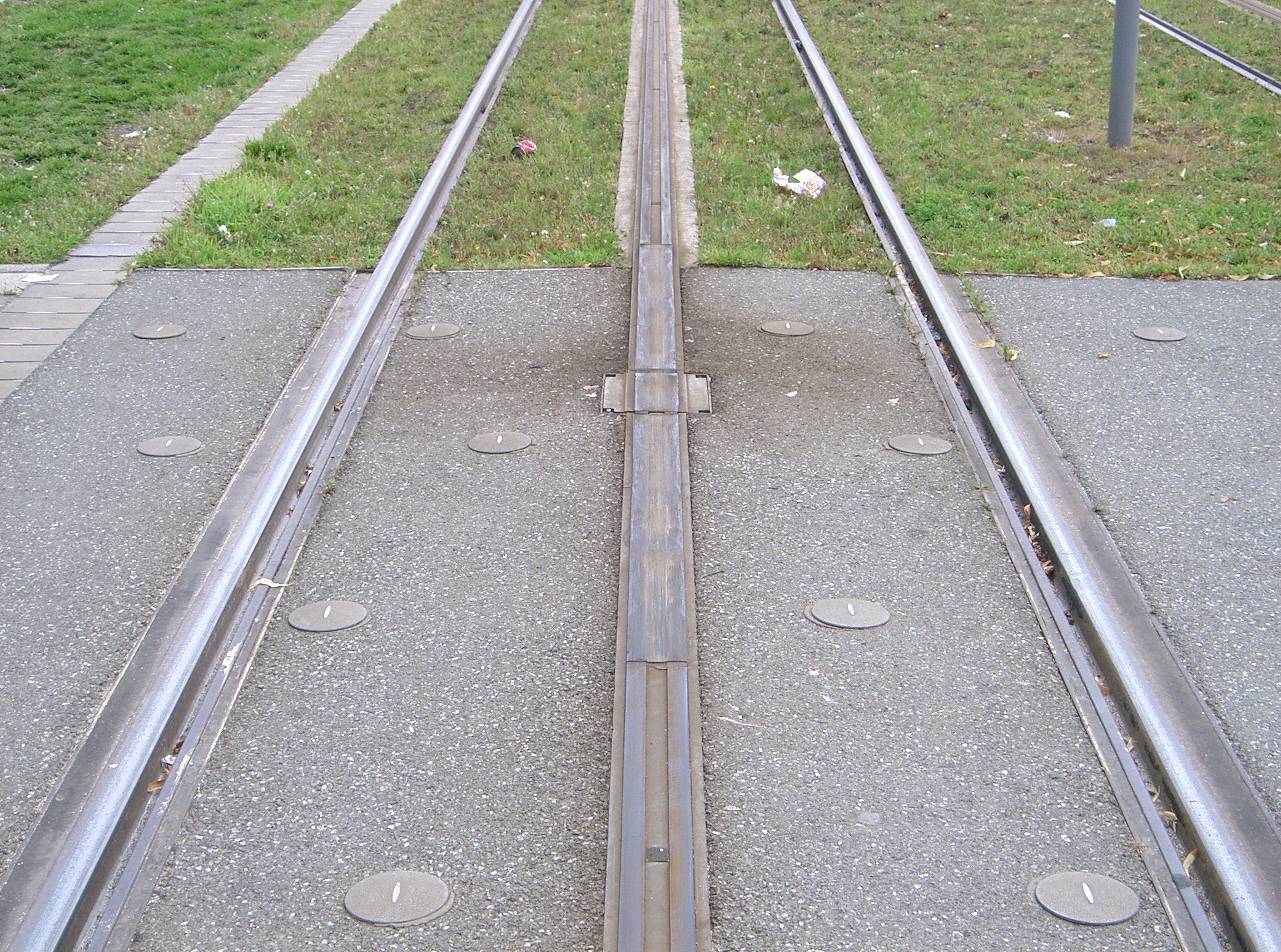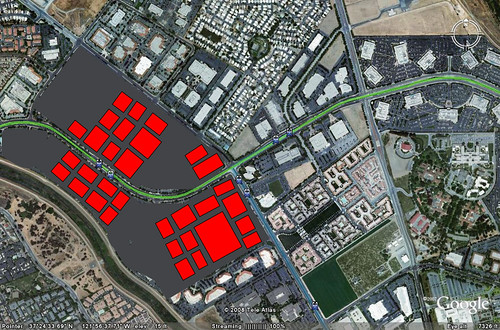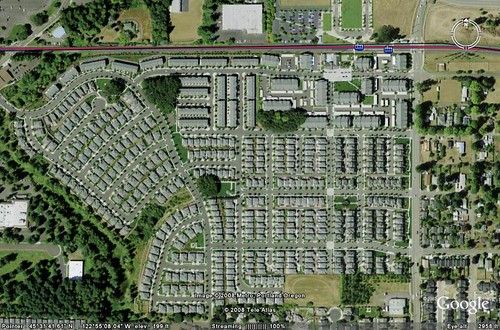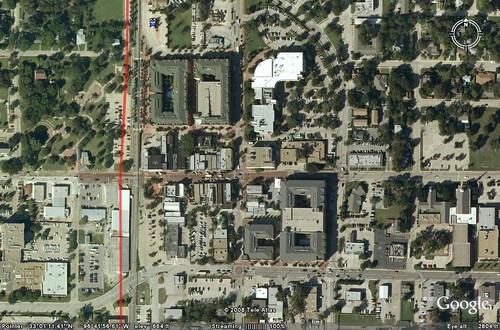Thursday, May 8, 2008
Austin Hits the Pause Button
Wednesday, May 7, 2008
Increasing Value
"In the future, these areas will outperform the rest of the region. If the market goes up everywhere, these areas will increase by 10 to 20 per cent or more. If values in the GTA drop, these will drop by 10to 20 per cent less," forecasts Campbell.
Campbell said he doesn't own property in the area, but will be looking this week for multi-residential units as an investment.
Access to transportation is just one of many real estate criteria used to determine value, but it is becoming increasingly important as highways grow more congested and gas prices increase.
The Tragedy of California
The thing you really forget about the deplorable land use and development patterns in southern California (and the Southwest more generally) until you come back out here is how goddamn nice the weather is, a fact that takes the situation out of the realm of farce and into tragedy. You know what a good place to never walk anywhere would be? Boston or Chicago in the winter. Or maybe DC or New York in the summer. That's some nasty weather to be walking around in.
But LA would be a great place to walk or ride a bike to work all year 'round. But it's our bad weather belt that has the walkable cities, and our sunny and temperate all the time region that barely has sidewalks.
Miami Faces Some Hurdles, Is the Next Dulles
This is another Dulles. I fully expect to see Peters and Simpson to whip out a big red pen on this project. The Feds don't believe in Metros and will not as long as they are compared to highways using highway metrics. They've made it abundantly clear that all they care about is tolls and roads. Don't believe the lip service.Desperate to regain a shot at $700 million in federal funding for expanded Metrorail service, Miami-Dade leaders promised Monday to quickly improve the county transit department's financial and operational plans.
''We're going to have to have not only great planning, but great action,'' said U.S. Rep. Kendrick Meek, D-Miami, who prodded the Federal Transit Administration to write a step-by-step plan last month for reviving the county's funding application.
Monday, May 5, 2008
Dubai to Install Alstom APS
Many have hoped that the technology would come to the United States and answer the call to get rid over overhead wires, specifically in the District of Columbia where an old law prohibits wires. It was specifically called for by Clay Chastain for Kansas City's system. However experts in the US have said that Alstom has no plans to bring the system to the United States. Part of the problem is the unknown effects of stray current coming from the third rail when the roads are salted during snow or ice storms.
How it works: Basically a third rail is laid between the two tracks and turns on when radioed by the vehicle. Two shoes, one on each end of the tram take up power as the electrified sections pass under. Sections only turn on when they are underneath the vehicle leaving pedestrians safe from being electrification.

 Flickr Photo Courtesy of Art in BX
Flickr Photo Courtesy of Art in BX Flickr Photo Courtesy of Dorsetbays
Flickr Photo Courtesy of DorsetbaysOutside of the historic downtown, the line in Bordeaux switches over to catenaries. Other cities are looking into using batteries and Stone Consulting that brought us the Kenosha Streetcar for $3 million per mile is also looking to use a ultra-capacitor for a heritage line in Savannah Georgia.
Express Your Displeasure for the Gas Tax Proposals
Doesn't sound so far off does it?We are top officials of the United States Senate Government who are interested in importation of oil into our country with funds that are presently trapped in the FEDERAL TRANSPORTATION TRUST FUND dedicated to improving transportation. We wish to send this money to overseas accounts in the MIDDLE EAST but cannot due to restrictions in Congress Transportation Equity Act requiring that this money must be spent to build roads, bridges and high speed trains.
If you accept we will deliver to your a sum of 30 DOLLARS in the summer 2008 in form of a "GAS TAX HOLIDAY". You will then deliver this money to accounts of our friends in Middle East by taking it to your nearby gasoline station where they have information to forward the money. Please supply your bank account, social security number, address and your vote in DEMOCRATIC PRIMARIES AND NOVEMBER GENERAL ELECTION.
Sunday, May 4, 2008
A Wheel Tax?
I think I get tires every 25,000 miles or so. I also think it's supposed to be more than that but I'm on my 4th set for my 99 Jetta. Given that it's got about 85K miles on it, I'm not paying as much because I don't drive as much. It's just another small incentive to take transit if you can. We might also make the tax vehicle size regressive, meaning the larger the vehicle you drive and the bigger the tire, the more tax you pay. I dunno, another idea for the funding mechanism pot. What do you all think?
Saturday, May 3, 2008
Using Space Better
1. The Sprawl Way - What San Jose Looks Like

2. Sprawl Rearranged - What the same amount of development would look Like if the development were organized around the station. I outlined the buildings and rearranged them in a more compact way.

3. Sprawl Rearranged x2 - Doubling the amount of buildings, using the same footprint for each original building.

Friday, May 2, 2008
Kenworthy Speaks
1. LRT(Tram) Patronage in Europe has been increasing while bus ridership falls.
This is interesting to me because unlike the United States, Europe has kept a good amount of its tram systems. In many large cities, they are still networked to go a lot of places.
According to Jeff, in Europe, over a period of 10 years, Light Rail Transit (LRT) patronage rose 20.3% while bus patronage fell 5.6%. His implication is that people, the masses, simply and unequivocally prefer rail over bus. And surprisingly, it’s actually what are commonly considered the disadvantages of rail that turn out to be it’s advantages over bus transit in encouraging use. The high cost and inflexibility of rail creates a permanence that people prefer over the impermanent and unreliable nature of bus transit.2. Rail Focuses Development, Buses Follow it
Another polished gem Jeff provided us with was the idea that rail systems “focus” a city and development while bus systems simply “follow” development. So buses, because of their impermanence and reliance on auto roads, must heed to the “predict and provide” game and attempt to follow wherever development may randomly occur. Rail on the other hand spurs and centralizes development, creating a sense of permanence not found in no rail cities. Rail and streets renaissances go hand in hand.I've said this a few times before. Rail has the power if harnessed to focus development unlike buses that just respond to it. But it's not going to just happen. There need to be plans and policies in place to do it right. In the comments below Fred's post, a discussion started on San Jose. This is the perfect example of just saying that light rail is going to do all the work. I posted a while ago on employment sprawl. Well here again is an aerial of San Jose's system by all the tech jobs, something to not emulate.

Here is the Pearl District, which used to be a rail yard and was helped by the plans and policies of the PDC and the streetcar

Update: ABC in the comments asked that we use a more suburban area to show what's possible instead of an urban area. In the situation like San Jose above with 3 -5 story office buildings I think it's perfectly ok to expect a street grid like the Pearl Districts, there was a thought that it was the Pearl was predestined to turn out that way. Before the development agreement it was supposed to be tops 15 units an acre and the developer had thought about doing townhomes. Here is what it looked like in 1996.
 But as suburban examples go, here is another from Portland with single family homes in a grid South of Orenco Station.
But as suburban examples go, here is another from Portland with single family homes in a grid South of Orenco Station.
Downtown Plano trying to reintroduce Urbanism

And a Heavy Rail Subway example, Rosslyn Ballston on the Metro Orange Line. I've discussed this before but this used to be a strip suburban corridor. These things take time, this has been over 30 years.

Thursday, May 1, 2008
Obama on HSR
Grist has the money quote:
The irony is with the gas prices what they are, we should be expanding rail service. One of the things I have been talking bout for awhile is high speed rail connecting all of these Midwest cities -- Indianapolis, Chicago, Milwaukee, Detroit, St. Louis. They are not that far away from each other. Because of how big of a hassle airlines are now. There are a lot of people if they had the choice, it takes you just about as much time if you had high speed rail to go the airport, park, take your shoes off.
This is something that we should be talking about a lot more. We are going to be having a lot of conversations this summer about gas prices. And it is a perfect time to start talk about why we don't have better rail service. We are the only advanced country in the world that doesn't have high speed rail. We just don't have it. And it works on the Northeast corridor. They would rather go from New York to Washington by train than they would by plane. It is a lot more reliable and it is a good way for us to start reducing how much gas we are using. It is a good story to tell.
